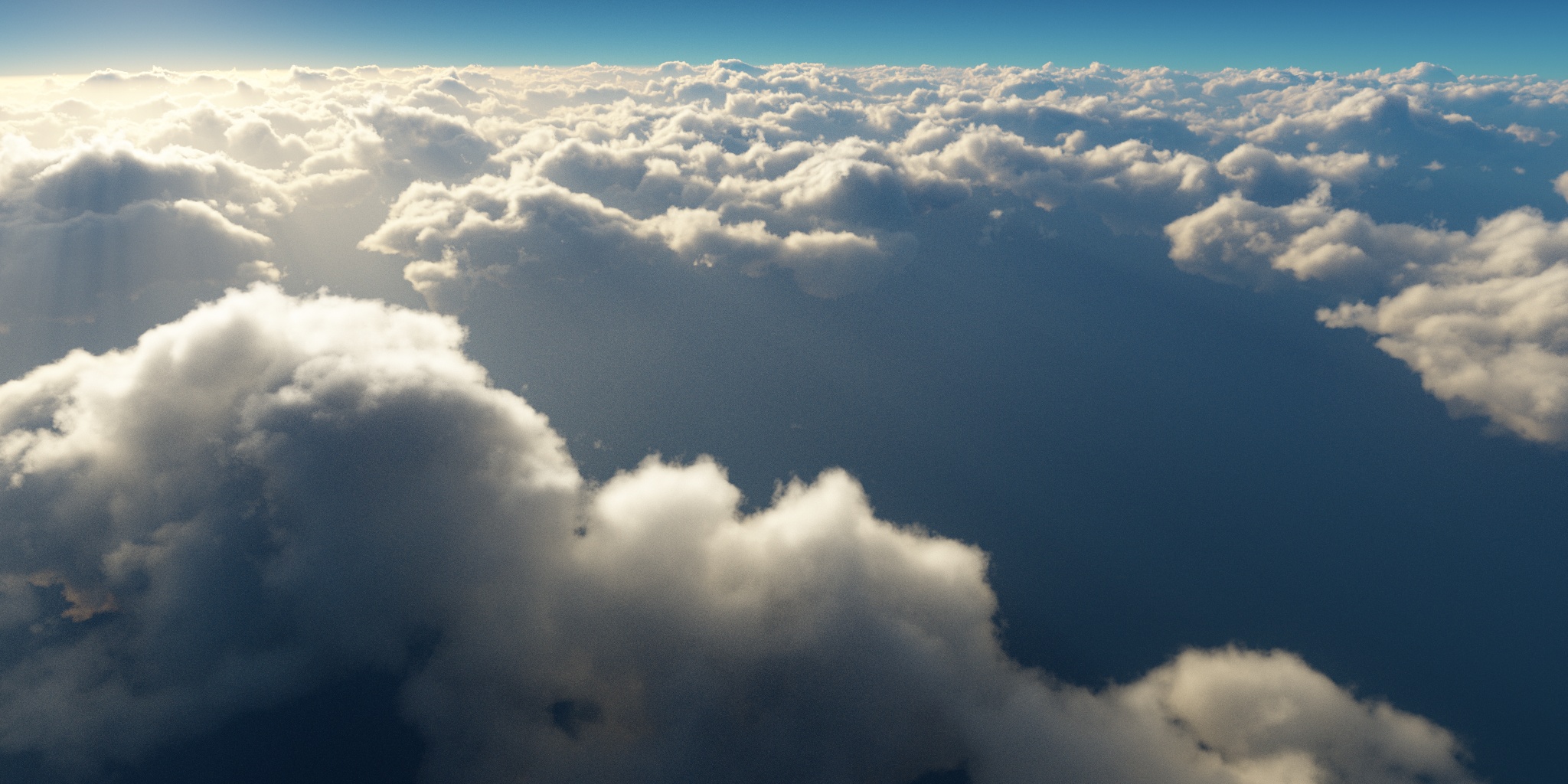We’re making a GPU renderer.
Terragen is the go-to solution for big skies and planetary views. This is, in part, because of its use of procedural systems, a “big scene, planet aware” approach to scene construction by default, and a primary focus on photorealism. But Terragen 4 and Terragen Sky only render final images on CPUs at the moment. GPU rendering is a hotly requested feature because it is expected that this will allow much faster renders and squeeze more utility out of your expensive compute hardware. We hear you, and we’re working on it!
Introducing VOLR
To meet this demand we are currently developing a new GPU- and CPU-based volumetric renderer called VOLR.
What we have so far:
- CPU+GPU renderer
- Multiple cloud layers
- Complete sky (procedural clouds extending beyond the horizon)
- Planetary scale, orbital views
- Rayleigh scattering (clear blue sky)
- Mie scattering (clouds, fog)
- Multiple scattering via path tracing
- Currently limited to one type of cloud with few controls
Work in progress:
- Interactive previews
- Fully customisable clouds (density shaders, masks etc.)
- Match Terragen 4 cloud types and render existing scene files
We need to support a wide range of cloud types with customisable shapes and density functions. This has implications for the architecture of the renderer, which is something fundamental that we want to get right. We have more work to do before VOLR goes into widespread testing.
Future work:
- VDB import
- Integrate terrains and general object/surface rendering
Please bear in mind that the renders shown on this page are from our research and development builds, and we can’t guarantee identical results from publicly released products. However, we expect the first release versions will be capable of much more than what is shown here.




